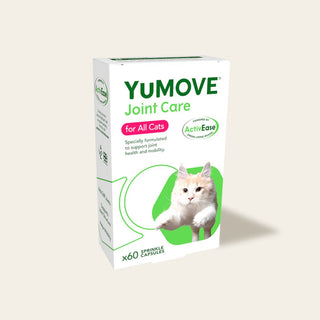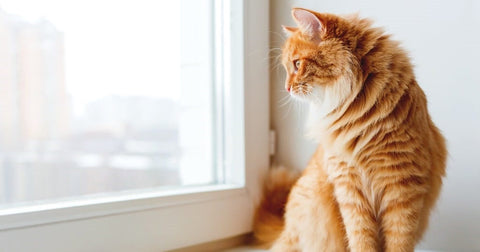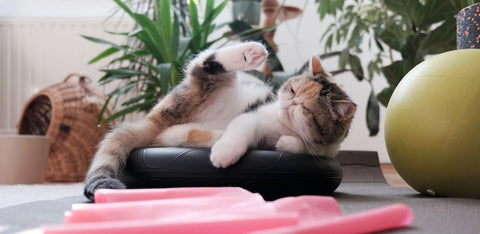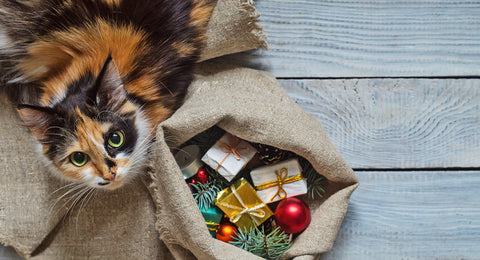
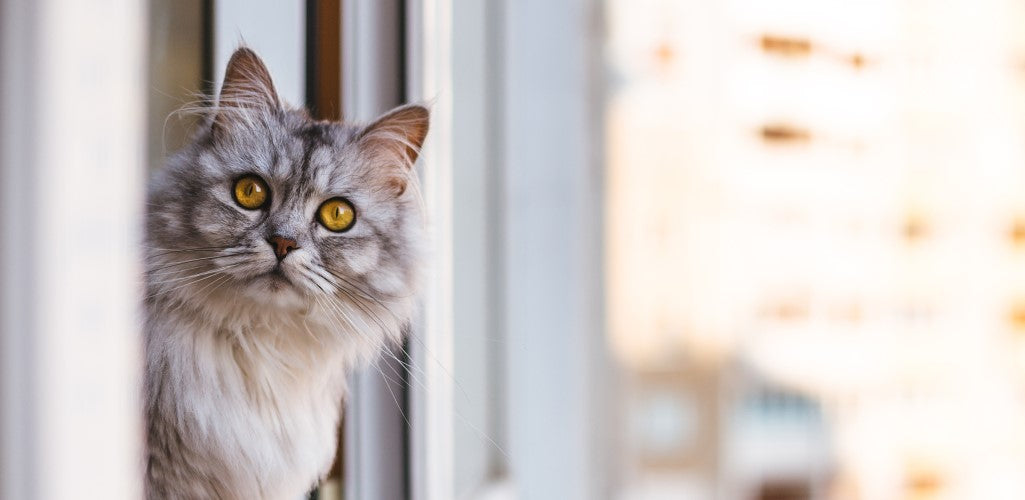
In or out? Keeping your cat's joints healthy
Does your cat live indoors or spend a good deal of their time outside? And do you ever think about how their lifestyle might affect your cat’s joint health?
Here we have a look at the impact of an indoor or outdoor lifestyle on your cat’s joints, and discover how you can help keep your cat’s joints as healthy as possible.

Indoor cat vs outdoor cat
When we think about the life of an indoor cat, it’s easy to imagine a cat curled up in their favourite place, somewhere cosy and out of everyone’s way. With their eyes closed, nose buried in their fur and their tail wrapped around their body for extra warmth, they may as well have a ‘Do not disturb’ sign hovering above their head.
On the other hand, an outdoor cat conjures up images of an adventurous feline who’s all set to investigate the local neighbourhood. We visualise the outdoor cat jumping up onto fences, squeezing under hedges, running across shed roofs, and exploring nearby gardens and allotments.
Who exercises most?
Unsurprisingly, cats that roam outdoors are likely to get a lot more exercise each day, and to be using their joints more than the average indoor cat.
Ideally your cat should do some exercise every day. Your outdoor cat will probably easily get their daily dose, simply through their everyday stalking, leaping and pouncing duties. Whereas an indoor cat may not be stretching their paws quite so far or so frequently.

The effects on your cat’s joints
The type – and amount – of exercise your cat is taking will have an impact on their joints.
Outdoor cats often seem capable of extraordinary feats. We’ve all seen cats jump up fences that look impossibly high. They can do this because they’re able to jump 5-6 times their own height (measured from the ground to their shoulders). Using their strong back legs and articulating through their joints, they’re able to spring into action with apparent ease.
An indoor cat may lack both the space and the opportunity to jump so high and therefore may be putting their joints under less pressure.
Inside your cat’s joints
Your cat’s joints are crucial to help your pet move freely and live their life to the full. Your cat has ball and socket joints at the shoulder and hip, and hinge joints at the elbow and knee (also known as the stifle).
These joints are cushioned by synovial fluid, which acts as a shock absorber and helps to lubricate the joint.
Getting the balance right

Whether you have an indoor or an outdoor cat, it’s important to get the right balance of exercise to help your cat’s joints stay healthy. Weight-bearing exercise will help to maintain your cat's muscle tone and mobility, helping your cat to stay more active. For cats that are less inclined to exercise by themselves, think about playing games and using toys to get them moving.
Your outdoor cat may be getting enough exercise each day, but they might also run more of a risk of putting additional pressure on their joints as they perform adventurous feats. If your outdoor cat is experiencing occasional joint stiffness, please speak to your vet about the right exercise for them, as they might recommend specific gentle exercises.
Meanwhile, your indoor cat may not be getting the daily exercise they need. If you think this is the case for your cat, see our health guide for tips on how much exercise does a cat need? Like any pet, a cat that isn't getting much exercise is going to be more prone to being heavier than ideal, which is also not good for their joints.
Does your cat need joint support?
When cats get older, they may need a little extra help with their joint mobility. Watch out for some of the signs:
- Your cat is less active than normal
- Your cat grooms less than before
- Your cat goes to the litter box less often
- Your cat is reluctant to jump off or on to high surfaces
- Your cat seems irritable or seems to avoid you.
Try YuMOVE
If you spot any of the five signs above, consider a joint supplement for cats, like YuMOVE Joint Care for Cats or YuMOVE Joint Care PLUS for Cats. These supplements contain joint care ingredients including Green Lipped Mussel, Glucosamine, Manganese, Vitamin E and Hyaluronic Acid. Together, they aid mobility, support joint structure and soothe joints with Omega-3.
If you have any concerns about your cat's mobility, please speak to your vet.
